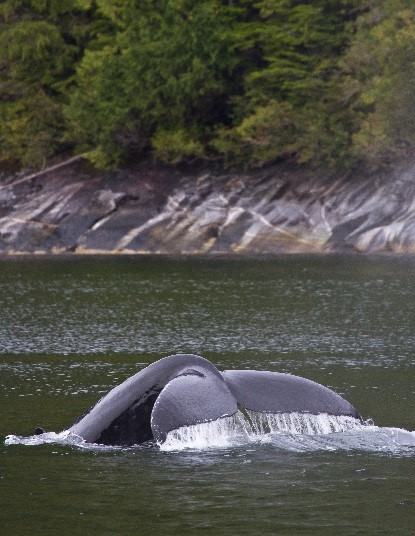Can We Bear the Real Cost of Northern Gateway?
In December, the Joint Review Panel, JRP, told the federal government the Northern Gateway pipeline and tanker project is in the Public Interest. In June, the federal government will make its decision based, in part, on this recommendation. In a series of blogs this week, WWF looks at the flaws in the environmental review of the proposed Northern Gateway Project.
Written by: Dr. Cathryn Clarke Murray, Marine Science Officer
The federal government’s decision on the contentious Enbridge Northern Gateway Project is imminent. Our government has made the case that this mega-oil development will bring jobs and economic benefits, but at what cost? Some might say the value of Canada’s wildlife and wild places – its whales, caribou and grizzlies, its ocean and river ecosystems – is priceless. Yet both Enbridge and the Joint Review Panel admit there would be negative impacts to all the environmental components assessed, without exception.
Species of fish, amphibians, plants, birds, whales, caribou and grizzly bears will be directly affected. So will their habitats on land, in lakes and rivers and at sea. And it doesn’t stop there. There will be adverse impacts on groundwater, wetlands, soils and the air; the very parts of the environment that provide not just wildlife, but humans too, with important ecosystem services. These impacts will occur even if Enbridge employs the latest and yet-to-be developed measures to soften the blow of these impacts.
Caribou are one species that could face considerable impacts from the project. The Joint Review Panel looked at the ‘cumulative effects’ (the total impact of the project combined with the impact of other development) on the Little Smoky boreal caribou population and four populations of southern mountain caribou (Hart Ranges, Telkwa, Quintette and Narraway). The Northern Gateway pipeline, 2100 kilometres long, exceeds the critical limits set for cutting corridors through forests and other habitat. This kind of linear development increases the ability of wolves to hunt caribou unable hide in fragmented forests, decimating their numbers and potentially wiping out their populations completely.
Canada’s grizzly bears face similar threats from the proposed project. The pipeline corridor would also fragment their habitat, leading to more bear deaths from vehicle strikes and increasing the access of trophy hunters. Eight grizzly bear populations would be affected by a pipeline corridor of this length. Astonishingly, the JRP found the possible extinction of caribou and grizzly bear, to be “justified in the circumstances”.
Uncertainty about some environmental impacts has allowed Enbridge and the Joint Review Panel to dismiss them completely. Enbridge said there is not enough data to assess the cumulative effects of underwater noise from project tanker traffic on marine mammals, the mortality of whales from ship strikes and the habitat disturbance of terrestrial birds and freshwater fish. There is high uncertainty about how these could impact Pacific species and currently no thresholds by which to assess the impacts. Simply put, we may not know how much is too much, until it’s too late.
Had it exercised the proper degree of caution, the Joint Review Panel would also have found additional significant impacts for whales, amphibians, and freshwater fish. For some species, the stakes are much higher: species on the brink of extinction, such as the endangered blue whale, sei whale, North Pacific right whale, white sturgeon fish and the Northern leopard frog. Have we come to a place where we can simply dismiss the value of these animals?
We know that resource extraction invariably comes with environmental costs. But as a society, Canadians need to decide on this project based on an accurate accounting of the real costs and benefits. We need to ask ourselves “How much can we bear?”




